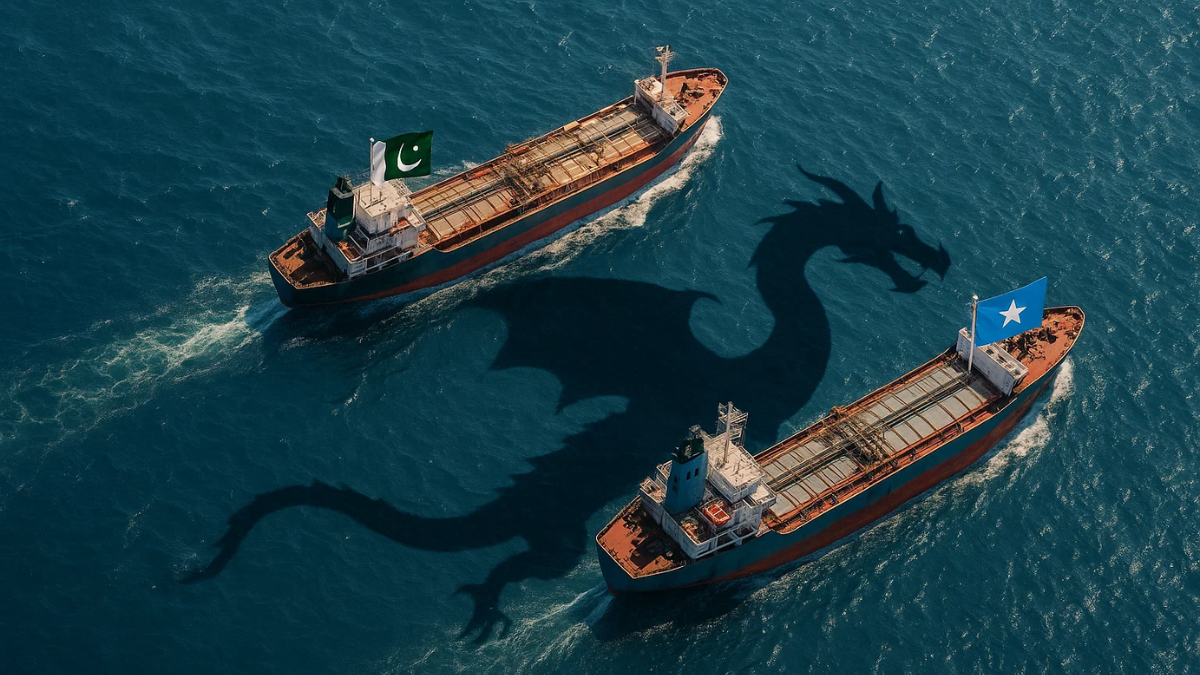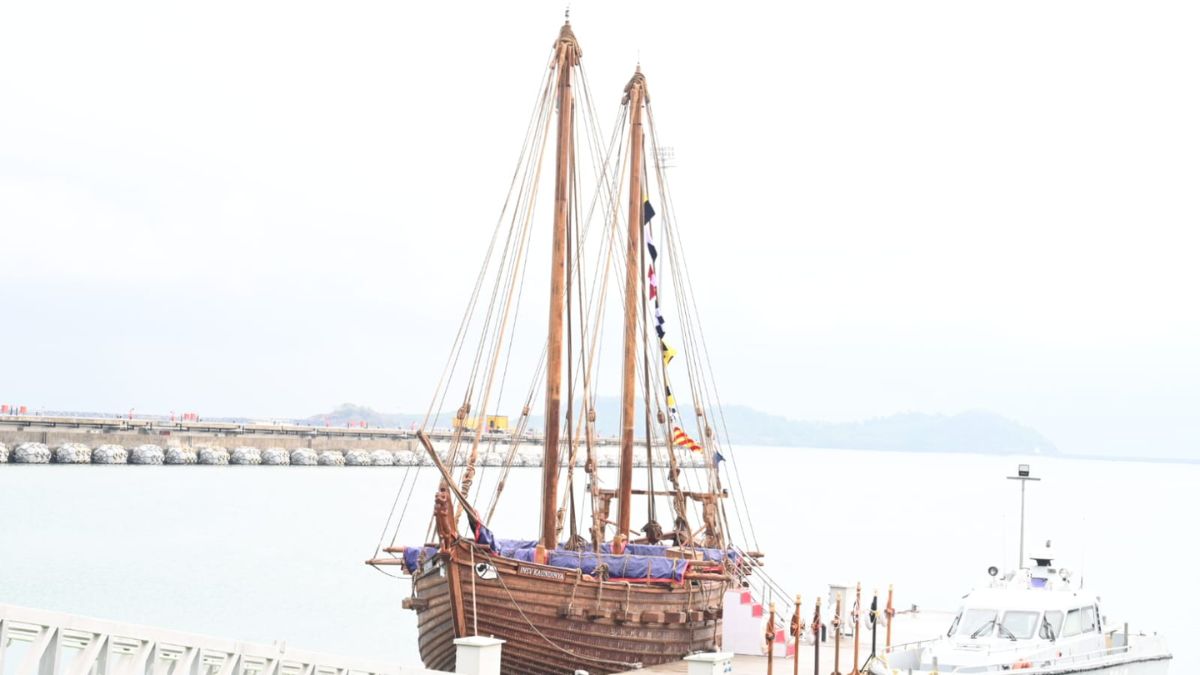China’s Proxy Corridor: How Pakistan, Somalia Are Extending Dragon’s Tail In The Indian Ocean

Pakistan and Somalia's pact appears to be doing China's bidding in the Indian Ocean. Image courtesy: A)-generated image via Sora
The Horn of Africa has become the western edge of China’s maritime web— an emerging chain of influence linking the People’s Liberation Army’s first overseas base in Djibouti with Pakistan’s naval industry and, now, Somalia’s fragile coastline. Each piece of this puzzle appears disconnected, yet together they form a new geography of power: one that extends Beijing’s reach without the visibility or controversy of direct military expansion.
The latest link in this chain is Pakistan’s new defence pact with Somalia, signed in August 2025. Billed as a training and capacity-building programme, the deal gives Islamabad a formal role in rebuilding Somalia’s navy— a role backed by Chinese technology and doctrine. It may look like bilateral cooperation, but it functions as the southern extension of a broader system that already runs through Djibouti, Gwadar and Karachi.
How does the Djibouti–Mogadishu axis work?
Djibouti, perched at the mouth of the Red Sea, has hosted China’s first overseas naval base since 2017. Over the past eight years, satellite imagery has shown the outpost’s transformation into a major logistics hub, with hardened berths for large warships and facilities for submarine maintenance. It is officially described as a supply station for anti-piracy patrols, yet it effectively anchors China’s western Indian Ocean presence.
Further east, Pakistan’s ports of Karachi and Gwadar act as Beijing’s shipbuilding and supply corridor. Chinese-made Type 054A/P frigates and Hangor-class submarines sustain Pakistan’s navy, while Chinese credit and expertise shape its dockyards. The new Somalia agreement completes the line: Pakistan now exports training and logistics standards derived from Chinese systems to an African partner desperate for maritime stability.
This creates what analysts describe as a functional continuum: Djibouti provides the logistics, Pakistan the training, and Somalia the access. Together, they outline a discreet Chinese-aligned corridor stretching along one of the world’s busiest trade routes.
What is Somalia’s role in China’s evolving strategy?
Somalia’s coastline, more than 3,000 kilometres long, straddles the sea lanes linking the Red Sea with the wider Indian Ocean. After years of instability, its navy remains under-equipped and fragmented. The vacuum such created is now being filled by foreign partnerships. Pakistan’s new mission, presented as technical assistance, introduces Chinese-origin systems and doctrine into Somalia’s security ecosystem.
The logic mirrors previous Chinese engagements elsewhere: pair infrastructure finance with security cooperation, delivered through partners who attract less scrutiny. For Mogadishu, the arrangement brings much-needed capability; for Beijing, it delivers influence at arm’s length. Over time, Somali officers trained on Pakistani-Chinese platforms may find themselves interoperable not with African or Western navies but with a growing Chinese-led maritime network.
What are the risks for the region?
The western Indian Ocean’s security architecture is shifting from multilateralism to a patchwork of bilateral deals. Where international coalitions such as the Combined Maritime Forces once coordinated counter-piracy patrols, new entrants like Turkey, Pakistan and China now operate through overlapping mandates. Turkey’s decade-long maritime pact with Somalia already gives it a major presence in Mogadishu; Pakistan’s arrival adds a second external power with military privileges, both backed by Chinese investment and technology.
For African states, the trend is double-edged. These deals promise training, ships and money but dilute regional accountability. For India, Europe and the United States, they signal a quiet expansion of China’s strategic depth without the provocation of new bases. The Djibouti-Mogadishu corridor allows Beijing to secure sea lanes and project influence through partners, not flags.
What comes next?
China’s maritime strategy is evolving from construction to curation, becoming less about building ports, and more about managing networks. Pakistan’s defence diplomacy in Africa marks a new phase of that model: proxy partnerships that multiply Beijing’s influence while diffusing its visibility. Somalia, meanwhile, risks trading one form of instability for another— dependence disguised as development.
For the Horn of Africa, the question is not whether external actors will shape its seas, but whose rules will prevail. The balance of sovereignty, security and strategy now depends on how quickly regional institutions can offer credible, transparent alternatives before this corridor of quiet control becomes an irreversible fact.







